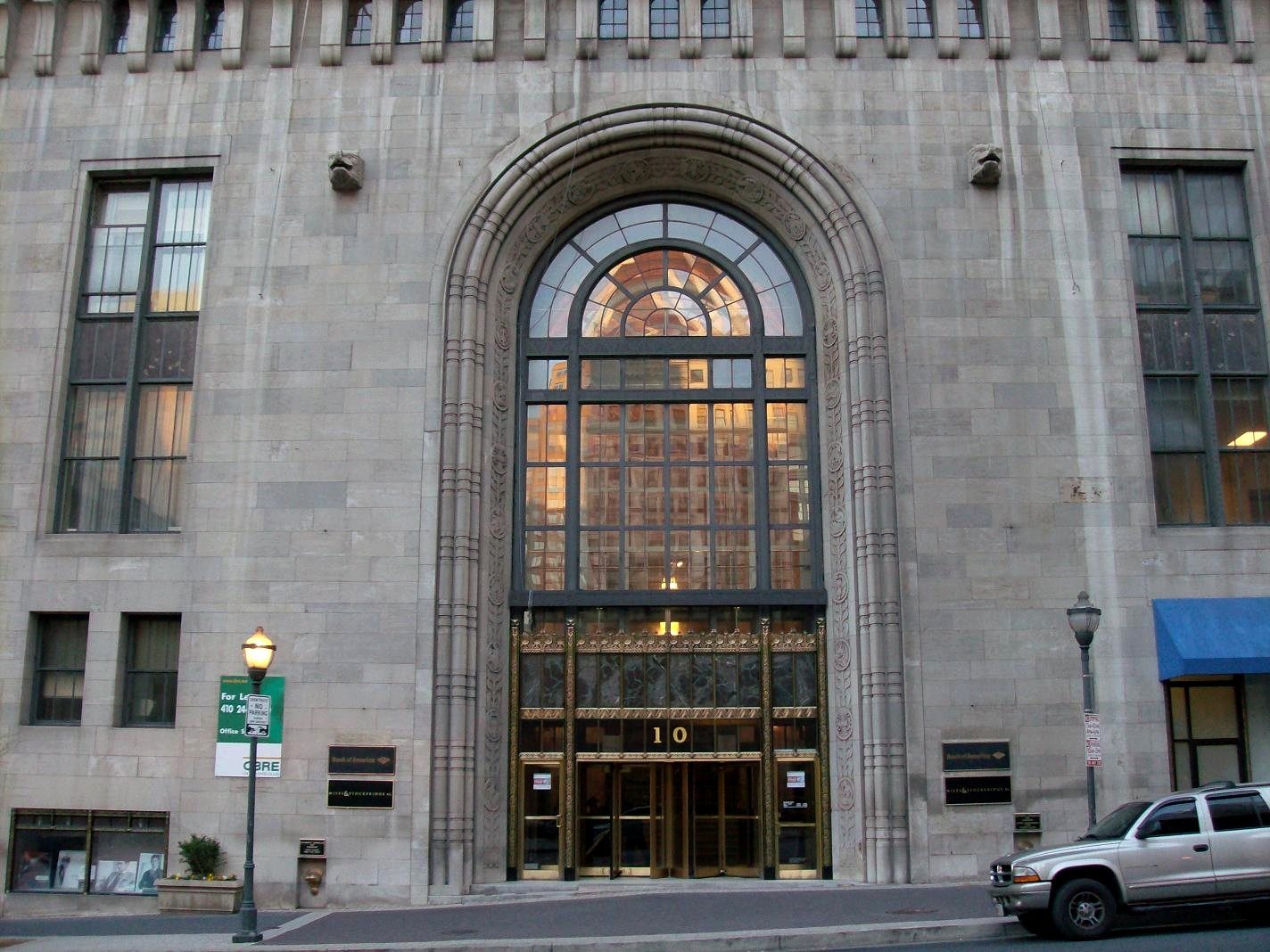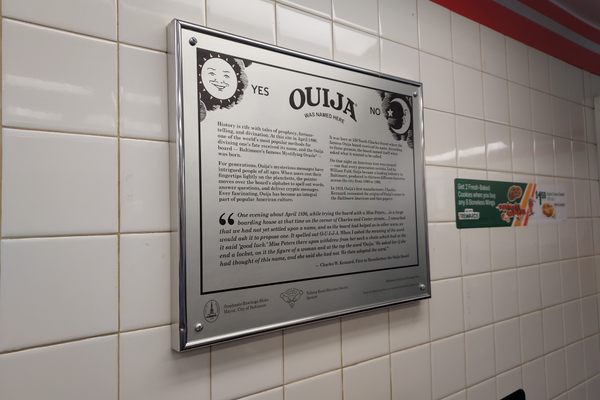Work Out in a Bank Vault in Baltimore’s Art Deco Gym
When your gym is this beautiful, you never want to skip leg day.

The entrance to the Baltimore Trust Co. Building at 10 Light Street. (Photo: Vincent van Zeijst/CC BY-SA-3.0)
The Baltimore Trust Co. building in Downtown Baltimore has a new ground-floor tenant—the Under Armour Performance Center. Finally, you can enjoy the Art Deco aesthetics that became synonymous with 1920s-era banks while you pump iron.
The Baltimore Sun reports that over the past three years, the 50,000-foot former bank lobby has undergone a conversion into a state-of-the-art gym, boasting 74 cardio machines, a salon, spa, physical therapy practice, and café. Gym owner and CEO Nate Costa worked to preserve many of the lobby’s original features, installed in 1929 when the lobby was home to the Baltimore Trust Co. bank.
That includes marble Romanesque columns, iron grates and accents, a 52-foot mosaic ceiling, and ornate chandeliers. “We looked at how to celebrate the space and still make it functional,” Costa explained to the Sun. One of the biggest challenges was incorporating the bank’s vault into the design. According to the Sun, “Workers spent weeks drilling through thick concrete and steel walls. Now, a massive vault door frames the entryway to a members lounge filled with armchairs and flat-screen TVs.”

The lobby of the Baltimore Trust Co. building shortly after completion in 1929. (Photo: Library of Congress/HABS MD-1119-22)
Despite Costa’s interest in and efforts towards preserving the bank lobby’s original character, some modifications were unavoidable. Specifically, the bank-turned-gym’s marble floors feature mosaic murals created by Maryland artist Hildreth Meière. Meière—who would go on to design the “Song,” “Drama,” and “Dance” rondels at Rockefeller Center, mosaics for the Great Hall dome at the National Academy of Sciences, and other notable murals used figurative and geometric designs inspired by Baltimore’s industries, harbor, and transportation to turn the lobby floor into a work of art.

Unfortunately, marble floors aren’t really the best material to exercise on, and the gym has installed “performance turf” mats over the floor, drawing criticism from some local preservationists who would prefer that all of the original fixtures of Baltimore’s only Art Deco skyscraper remain visible. However, Meière’s granddaughter, Hildreth Meière Dunn, toured the lobby with the gym’s architect and told Baltimore Brew that she was happy the mosaics were being covered up and protected. “At least [Meière’s] work is being saved. Whatever happens to the building, it will still be there,” she said.
So far, about 1,000 people have joined the new gym, with memberships costing $50 a month. If you’d like to enjoy the building’s interior without breaking a sweat, most of the facility will be open to the public. Those of us not in Baltimore will have to content ourselves with the Sun’s video tour and a photo gallery from the Baltimore Business Journal.










Follow us on Twitter to get the latest on the world's hidden wonders.
Like us on Facebook to get the latest on the world's hidden wonders.
Follow us on Twitter Like us on Facebook